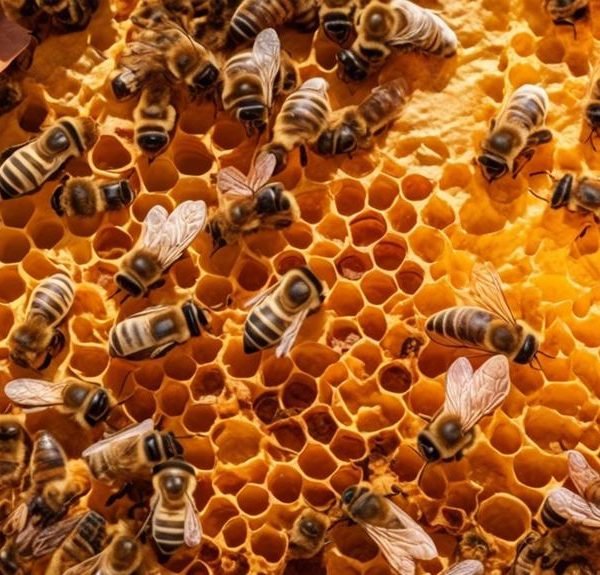Stunning secrets of bee behavior revealed: uncover why these diligent creatures keep revisiting the same spots in your garden.
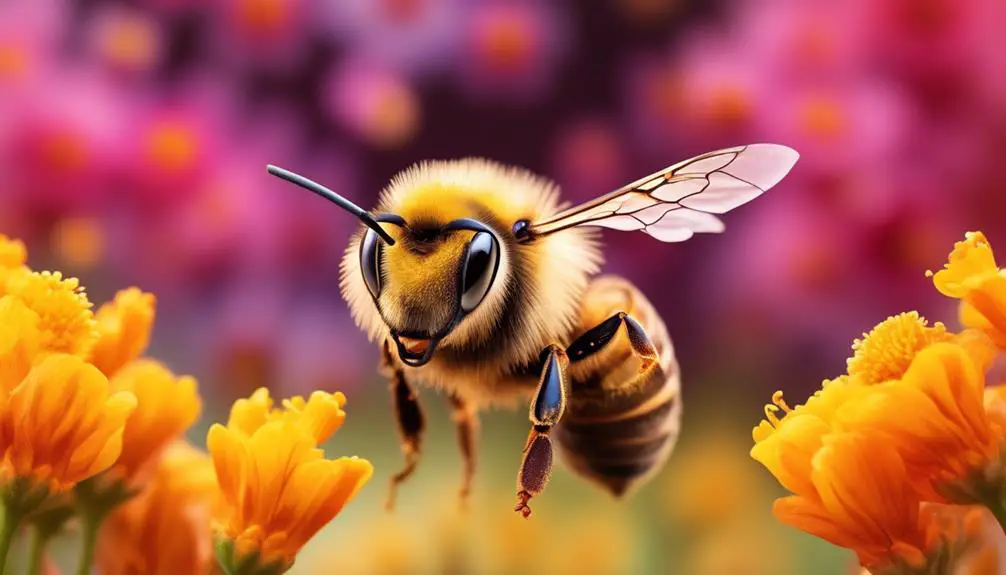
Why Do Bees Keep Coming Back to the Same Spot?
You see them buzzing around your garden, you notice them returning to the same flowers day after day, and you've probably been puzzled by their relentless consistency.
The seemingly mundane behavior of bees is, in fact, a fascinating subject rooted in complex biology and intricate navigational systems. The reasons behind why bees keep coming back to the same spot are manifold, ranging from their unique communication systems to their acute sensitivity to scents.
However, it's not simply about floral attraction; there's an intricate dance, both literal and metaphorical, involved.
Intrigued yet? Let's explore this fascinating phenomenon further.
Key Takeaways
- Bees use visual cues, such as colors and patterns, along with the sun's orientation to navigate and locate flowers.
- Bees have a keen sense of smell and use it to locate flowers and communicate, analyzing and remembering scents associated with specific locations.
- The waggle dance is a complex form of communication used by bees to convey information about food sources, including direction and distance.
- Bees are attracted to flowers due to their vibrant colors, sweet scent, and unique patterns, and they exhibit flower fidelity by sticking to one type of flower during a foraging trip.
Understanding Bee Navigation Systems
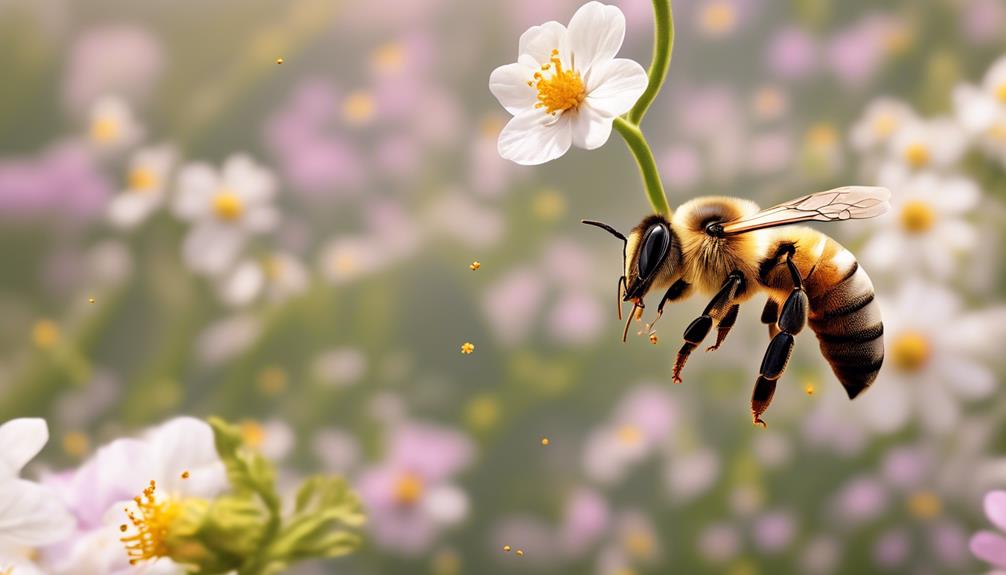
In order to comprehend how bees consistently return to the same spot, you must delve into the intricate nature of their navigation systems, which involve a complex combination of visual cues, sun orientation, and memorized landmarks. Bees aren't simply buzzing around aimlessly. They're using advanced techniques that scientists are still trying to fully understand.
Visual cues are a primary factor in bee navigation. Bees can recognize colors and patterns, aiding them in locating flowers for nectar and pollen. They're also sensitive to ultraviolet light, which is invisible to humans but provides additional visual information for these insects.
Sun orientation is another crucial element. Bees use the sun as a compass, adjusting their flight paths based on the sun's position. Even on cloudy days, bees can detect the sun's location through the polarization of light in the sky.
Lastly, bees memorize landmarks to navigate their surroundings. They're able to remember specific features of the landscape, like trees or buildings, and use them as reference points. This combination of techniques enables bees to return to the same spots with impressive precision, showcasing their remarkable navigational abilities.
The Role of Scents in Bee Behaviour
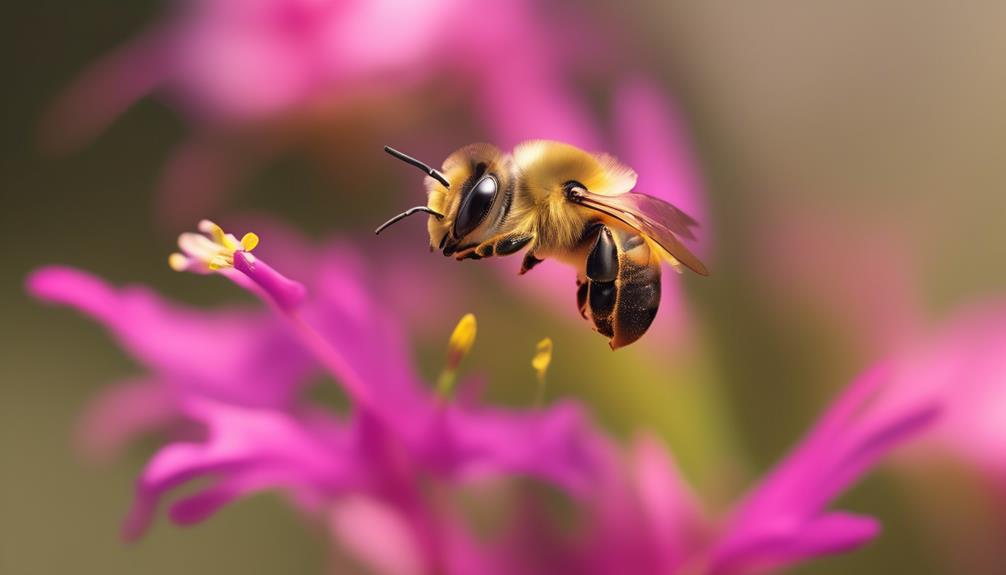
You might be surprised to learn that a significant factor in bee behaviour is their keen sense of smell, which they use extensively to locate flowers, communicate with each other, and even identify threats. This olfactory capability is so developed that bees can distinguish hundreds of different floral varieties and detect pheromones, a type of chemical communication used in their social structure.
The role of scent in their behavior is complex and multifaceted. Bees don't just detect a scent; they analyze it, remember it, and can even associate it with specific locations or experiences. This scent memory and association is a crucial aspect of why bees keep returning to the same spots.
Scent markers left by other bees guide them back to prosperous foraging sites. It's like a fragrant breadcrumb trail leading them back to the source. You can think of it as the bee version of GPS, grounded in their acute olfactory sense.
Bee Communication: The Waggle Dance
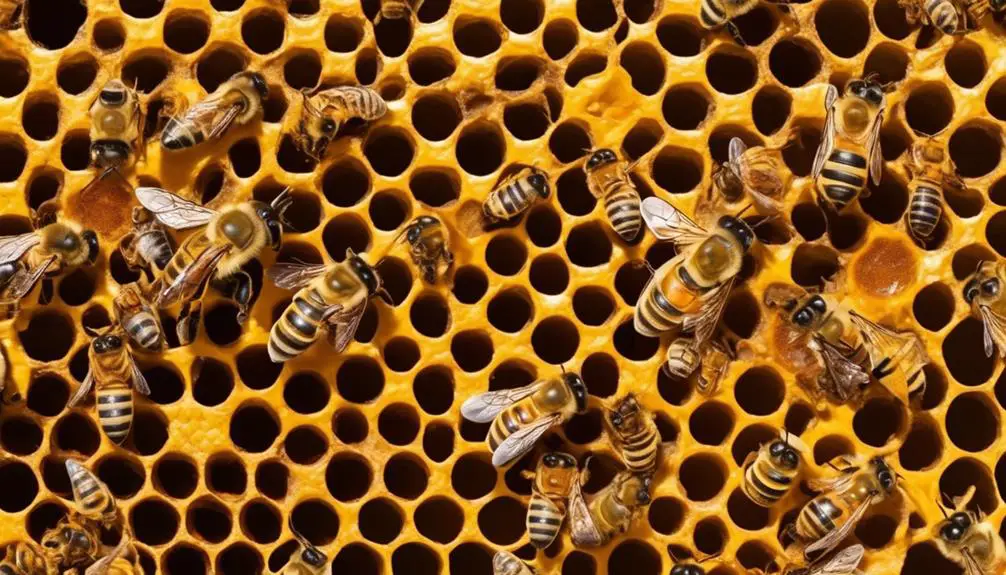
Another fascinating aspect of bee behavior lies in their complex form of communication known as the 'waggle dance'. You might wonder, what's so special about this dance? It's essentially a sophisticated language of movement that bees use to convey crucial information about food sources.
Imagine you're a forager bee that's just discovered a rich nectar source. You fly back to the hive and perform an intricate dance on the honeycomb's surface. The dance's direction indicates the food source's direction relative to the sun. The duration of your waggling run—the back and forth movement in a straight line—corresponds to the distance to the food. The more vigorous your dance, the higher the quality of the food source.
Other bees in the hive watch your dance and decode the information, enabling them to find the food source even if they've never visited it before. This swarm intelligence is key to the bees' survival and success. It's a captivating example of how communication can evolve in the animal kingdom.
In essence, the waggle dance is a silent language, a remarkable testament to the bees' intelligence and adaptability.
Importance of Flowers in Bee Attraction
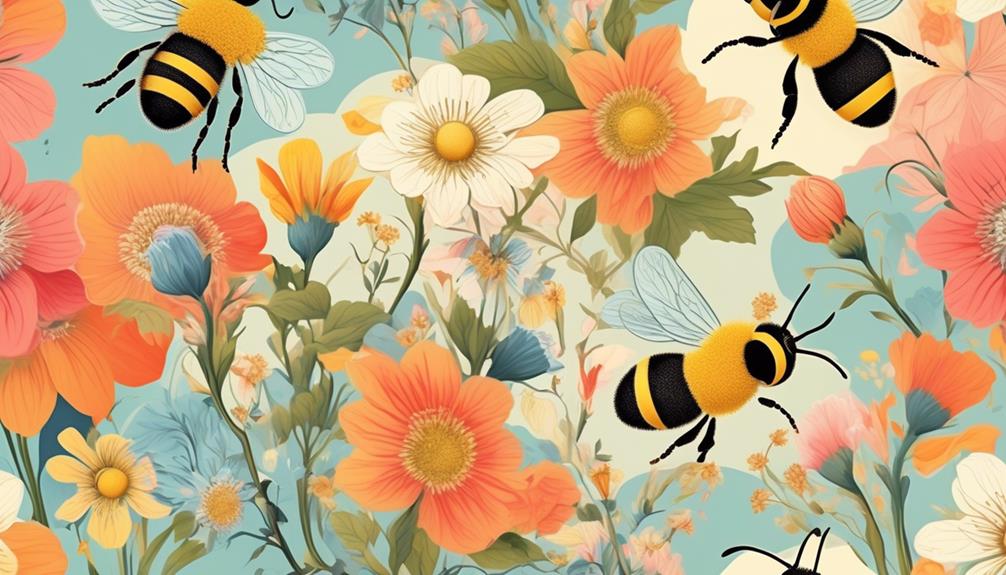
Bees' magnetic attraction to flowers – a phenomenon known as 'flower fidelity' – plays a crucial role in their foraging activities and the pollination process. You might've observed this fidelity; a bee's consistent return to the same type of flower, even when others are abundant. This isn't a random act, but rather a strategy that bees employ to optimize their foraging efforts.
Flowers provide a banquet of nectar and pollen, the prime food sources for bees. They're enticed by the flower's vibrant colors, sweet scent and unique patterns, which serve as visual and olfactory signposts. But it's not just about the allure. Bees are discerning foragers. They've evolved to recognize and remember the flowers that offer a higher reward.
Furthermore, by sticking to one type of flower during a foraging trip, bees become more efficient in extracting nectar and pollen. They essentially 'learn' the structure of the flower, reducing the time spent on each subsequent visit. This flower fidelity also aids in cross-pollination, as bees carry pollen from one flower to another of the same species, thus promoting genetic diversity within plant populations.
Threats to Bee Homing Abilities

While the intricate dance between flowers and bees ensures their mutual survival, several factors can disrupt this harmonious relationship by jeopardizing the bees' impressive homing abilities. Pesticides, habitat loss, and climate change are key threats you should be aware of.
Pesticides, particularly neonicotinoids, can impair a bee's ability to navigate back to its hive. They interfere with the bee's neural processing, causing disorientation and memory loss. You might imagine forgetting your way home one day; that's a reality for these pesticide-exposed bees.
Habitat loss also plays a significant role. As landscapes change due to urban development or deforestation, bees lose their floral resources and nesting sites. This can displace bee populations or even lead to their extinction.
Lastly, climate change affects bees' homing abilities in subtle, yet profound ways. Changes in temperature and precipitation patterns alter the flowering times of plants, disrupting the synchrony between bees and their food sources. Bees may arrive too early or too late to a flower source, threatening their survival.
It's crucial to understand these threats and take action. By doing so, you're not just protecting the bees, but also the biodiversity they help sustain.
Frequently Asked Questions
What Are the Common Types of Bees That Often Return to the Same Spot?
You're likely observing honey bees or bumblebees, which are known for revisiting the same spots. Honey bees return to reliable sources of nectar, while bumblebees often have favorite foraging areas.
They've got an excellent sense of location and use visual landmarks to navigate. If they've found a good spot, they'll keep coming back.
It's their way of maximizing efficiency in their essential role of pollination.
How Does Climate Change Affect the Migratory Patterns of Bees?
Climate change can drastically affect bee migration. As you know, bees rely heavily on environmental cues for their activities. With changing temperatures and seasons, flowers may bloom at different times, disrupting bees' food sources.
It's not just about warmer weather, either. Increased rainfall or drought can alter landscape, making it harder for bees to find suitable habitats. So, climate change doesn't just change where bees go, it can also dictate if they're able to survive their journey.
What Steps Can Beekeepers Take to Prevent Bees From Returning to Unwanted Locations?
You, as a beekeeper, can take several steps to deter bees from revisiting unwanted locations.
Firstly, ensure to remove all traces of the previous hive. Bees can smell it, attracting them back.
Also, use deterrents like mothballs or citrus peels. They don't like the scent.
Lastly, if the issue persists, consider requeening. A new queen alters the hive's scent, preventing bees from recognizing the spot.
Experiment and see what works best for you.
Do Different Bee Species Have Different Patterns for Returning to the Same Spot?
Yes, different bee species do exhibit distinct patterns when returning to the same spot. It's tied to their foraging behaviors and navigation skills.
Honeybees, for instance, use a 'waggle dance' to communicate location details to their hive mates.
Bumblebees, on the other hand, rely more on individual exploration and memory.
Can Bees Become Dependent on Man-Made Structures for Nesting or Feeding?
Yes, bees can become dependent on man-made structures for nesting or feeding. They're adaptable creatures, so when natural habitats aren't available, they'll use what's around. You might see them making a home in an old birdhouse, or feeding on a garden you've cultivated.
However, this isn't ideal. They may face more dangers in these environments, and their reliance on them can indicate a larger problem with habitat loss.
Conclusion
So, you see, bees' remarkable navigational skills, scent communication, and the intriguing waggle dance all contribute to their affinity for returning to the same spot.
The allure of flowers, rich in precious nectar, can't be underestimated either.
However, environmental threats can disrupt these complex behaviors, posing a real concern.
Understanding bees' homing abilities isn't just fascinating but crucial for their preservation.
Let's appreciate these tiny navigators and their significant role in our ecosystem.

